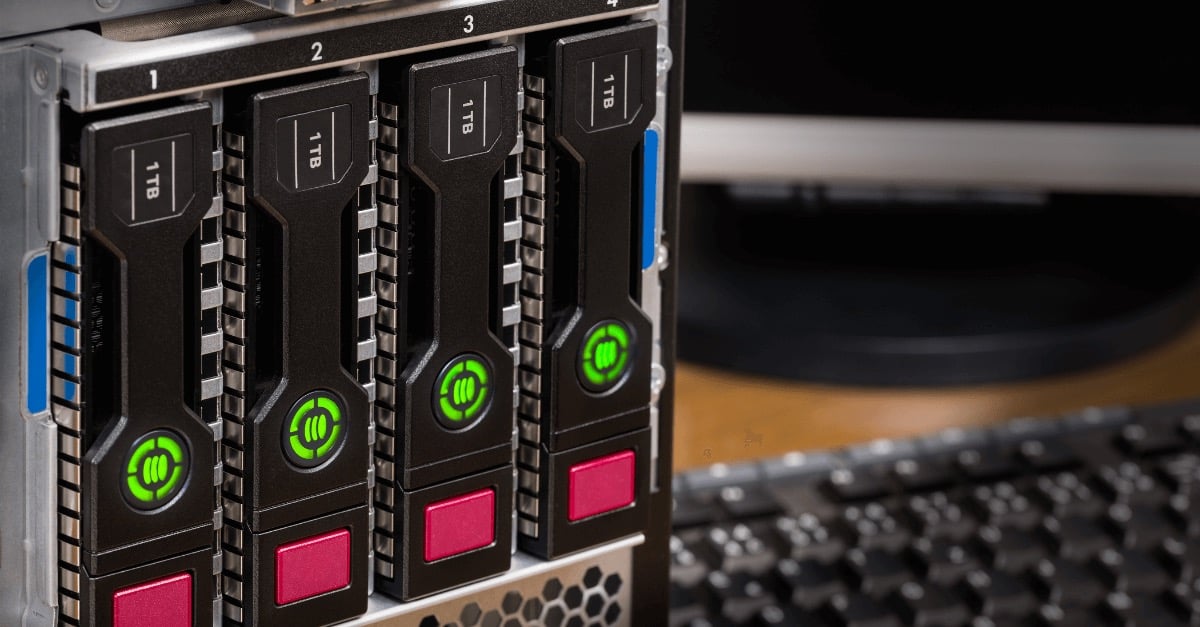RAID HDD Tech Comparison

Redundant Arrays of Inexpensive Disks (RAID) are frequently used by small to medium-sized businesses to help expand digital storage capacity. This innovation in hard drive technology has revolutionized the way businesses save their data and prevented many from having to make big capital investments in oversized drives and other expensive equipment.
But what is RAID? Think of RAID like surround sound. Rather than investing in one giant speaker, amplifier, and subwoofer, you’d rather have several speakers stashed around your living area. All of your speakers work in harmony (literally) to produce all-around sound. A RAID array is no different. Rather than a single large hard drive, several hard drives are used, but they act in concert like one unified drive.
This is an admittedly simple explanation for a fairly complex marriage of hardware and software. But the example of surround sound does give you a good idea of what RAID is and how this technology works.
One additional layer of complexity lies in the different types or levels of RAID. There are five types: RAID 0, RAID 1, RAID 5, RAID 6 and RAID 10. A RAID comparison, like RAID 6 vs. RAID 10, is a useful way to look at each type and identify what makes them unique.
RAID 0
RAID 0 is all about performance. This array maximizes capacity and speed by harnessing the computing power of any number of disks and combining them to create an entity acting as one large drive. There is no limit to the number of drives combined in RAID 0, you simply need more than one.
The biggest drawback to this configuration is the lack of fault tolerance. If one drive fails, they all fail. And there are usually no usable copies of your data to be had unless the RAID was backed up to a drive outside the configuration.
To do a RAID comparison between other arrays, RAID 0 is the only configuration that guarantees data loss. When you think about RAID 0 vs. RAID 5 or RAID 0 vs. RAID 1, or even compare RAID 0 to RAID 10, every other array protects the user’s data from permanent data loss.
RAID 1
A RAID 1 configuration is basically a very sophisticated backup program. This array involves two disks that are identical copies of one another. If one hard drive fails, the other will support and contain all the same information. As a result of this duplication, you shouldn’t experience any data loss. This configuration results in high-quality read performance but can cause write time to lag a bit.
When you think about RAID 1 vs. RAID 5 in a RAID comparison, you’ll notice both have great read times but are slower to write. This is interesting because one creates a carbon copy of the data (RAID 1) while the other (RAID 5) simply chops it up and stashes the information across the array.
RAID 5
RAID 5 configurations use three to 16 drives to break up data and store the pieces across all drives in the configuration. This is called a parity and yields incredibly fast read times, although slightly slower write times. In a Raid 5 configuration, if one of the drives fails, your data will be disorganized but preserved and discoverable somewhere on the remaining disks.
Keep in mind, though, that parities do diminish overall storage capacity. For example, a three-disk RAID 5 will have 33% less storage space than the combined space listed on the drives. And a four-drive configuration (the most popular RAID 5) will lose 25%.
RAID 6
This level or type of RAID is very similar to RAID 5, but when you’re thinking about RAID 5 vs. RAID 6, the biggest difference is that the parity exists on two drives. So, unlike a RAID 5, the RAID level RAID 6 requires a minimum of four drives. But because this configuration uses so many drives, two can fail at the same time, and your data will still be preserved.
When doing a RAID comparison of RAID 5 vs. RAID 6 speed, you’ll notice read speeds for RAID 5 and 6 are pretty comparable. However, write speeds are slower on a RAID 6 than a RAID 5 because of the second parity.
RAID 10
RAID 10 provides the high efficiency of RAID 0 and the safety of RAID 1. Just like in RAID 0, the read and write speeds will be incredibly fast, although the storage space will be cut in half, as is typical with a RAID 1 configuration.
This array is less likely to cause permanent data loss. Because all the data is being duplicated (as it is in RAID 1), you could lose one or two drives and still expect to have all your data intact.
A RAID comparison of RAID 10 shows there are few arrays able to compete with the performance and security of RAID 10. Even considering RAID 10 vs. RAID 5, RAID 10 still dominates as the superior choice in nearly every category.
This RAID comparison demonstrates why RAID configurations are the best way to maximize the storage and performance of your existing drives. But they aren’t full-proof. Every year there is a 2.5% chance each drive in your RAID array will fail. The more drives you have, the more likely failure becomes.
If this happens, DriveSavers can examine your drive and system and determine if your data is recoverable. Contact DriveSavers the next time your RAID array malfunctions!




